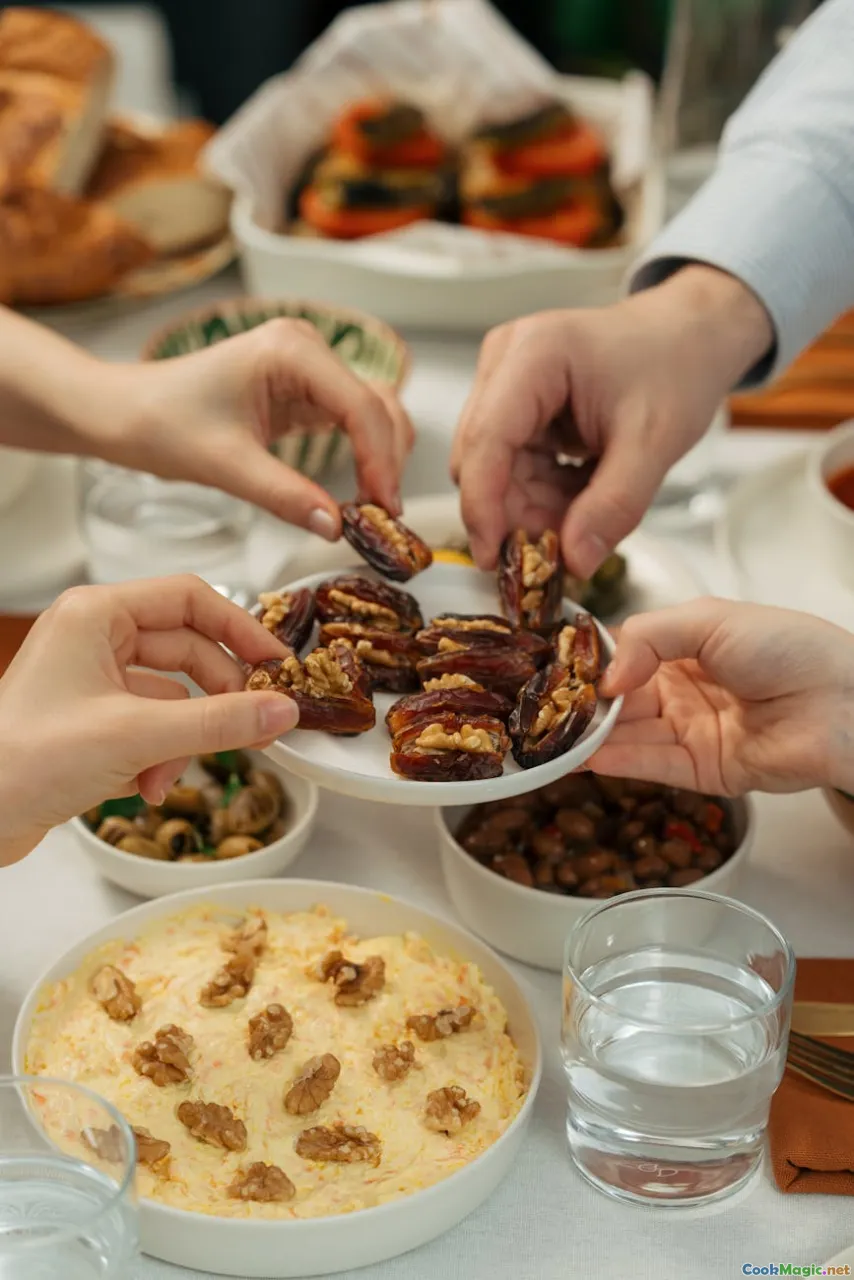Festive Feasts: Pakistani Eid Traditions
8 min read Discover the vibrant culinary traditions of Pakistani Eid celebrations, from aromatic dishes to heartfelt rituals that unite families and communities. April 24, 2025 23:55
Festive Feasts: Pakistani Eid Traditions
Eid is more than just a religious festival in Pakistan; it’s a grand celebration that weaves together faith, family, and flavor into an unforgettable tapestry. Every year, as the moon signals the end of Ramadan or the completion of Hajj, homes burst into life with colors, aromas, and joyful reunions. The heart of Eid beats strongest in the kitchen, where age-old recipes and new innovations come together to create a feast that embodies gratitude, generosity, and love.
The Cultural Significance of Eid in Pakistan
Eid, whether Eid al-FitrorEid ul-Adha, holds a profound place in the Pakistani social fabric. These festivals are not only spiritual milestones but also occasions that reinforce community bonds and familial ties. The preparations for Eid begin weeks in advance, with women meticulously cleaning homes, shopping for new clothes, and sourcing the finest ingredients for the upcoming celebrations.
In Pakistan, Eid is a collective experience—streets are decorated with lanterns and banners, markets are bustling with shoppers, and the air is thick with the scents of spices and sweetmeats. It’s a sensory overload that stirs deep emotional connections, reminding everyone of the importance of faith, charity, and togetherness.
The Rituals and Traditions
The Spiritual Prelude: Sehri and Iftar
The day begins with Sehri, a pre-dawn meal that sustains believers through the fasting hours. Aromatic chai, warm parathas, and dates are common staples, filling the senses with comfort and anticipation. As the sun rises, Muslims prepare for the day’s prayers and rituals.
Eid Prayer and Giving
Eid prayers are performed in mosques or open grounds, where thousands gather in unity. After prayer, the act of Zakat al-Fitr—a charitable donation—takes place, emphasizing the spirit of sharing and compassion. This act ensures that even the less fortunate can partake in the festivities.
The Festive Feast: A Culinary Journey
Once the prayers and charity are fulfilled, the focus shifts to the feast. Pakistani Eid food is a symphony of flavors—rich, spicy, sweet, and savory—all harmonized to celebrate divine blessings.
Iconic Eid Dishes of Pakistan
1. Biryani: The Crown Jewel
A true Pakistani celebration isn’t complete without a fragrant pot of Biryani. Layers of basmati rice, tender marinated meat (chicken, mutton, or beef), and a blend of spices like saffron, cardamom, and cinnamon create a symphony of aroma. The rice is fluffy yet slightly sticky, absorbing the flavors of the meat and spices, resulting in a dish that’s both hearty and delicate.
2. Sajji and Pulao: The Central Asian Influence
In regions like Balochistan and Khyber Pakhtunkhwa, Sajji—whole marinated chicken or lamb roasted over open flames—is a hallmark of Eid feasts. Accompanied by Pulao—a fragrant rice dish cooked with raisins, carrots, and spices—these dishes evoke a sense of rustic luxury.
3. Nihari and Haleem: Slow-Cooked Comfort
For breakfast or a late-night indulgence, Nihari(a slow-cooked stew of meat simmered overnight) andHaleem (a thick porridge of wheat, lentils, and meat) are favorites. Their rich, melt-in-the-mouth textures and complex flavors are achieved through hours of simmering with spices like turmeric, ginger, and garam masala.
4. Sweet Delights: Sheer Khurma, Mithai & More
Sweetness is integral to Eid celebrations. Sheer Khurma—a creamy vermicelli pudding with dates, nuts, and milk—is a festive staple. Gulab Jamun, Jalebi, and Barfi add bursts of color and sweetness, their syrupy textures and fragrant aromas delight young and old alike.
Personal Touches and Regional Variations
Every household adds its own flavor to Eid traditions. In Lahore, the aroma of Peshawri-stylekebabs mingles with the scent of fresh coriander and mint, while Karachi families indulge in spicyBiharikebabs and crunchyPakoras. In rural Punjab, Lahori chargha—a whole marinated chicken deep-fried to perfection—takes center stage.
In Karachi, the vibrant street food scene blossoms during Eid, with vendors selling Chaat, Samosas, and Falooda. Meanwhile, in Balochistan, the communal roasting of Sajji over open fires creates a rustic, communal atmosphere.
Personal Anecdote
I vividly remember my grandmother’s Eid preparations. The house would fill with the scent of saffron and cardamom as she prepared her signature Gajar ka Halwa—a sweet carrot pudding topped with crunchy nuts and a drizzle of ghee. The table would be laden with steaming curries, aromatic rice, and a variety of sweets. Those moments, sitting around with family, sharing stories and laughter, encapsulate the true spirit of Eid.
The Social and Emotional Significance
Eid in Pakistan transcends the culinary; it’s about forging bonds. Visiting relatives, sharing meals, and exchanging gifts are integral parts of the celebration. The act of Eidi—giving money or gifts to children—adds an element of joy and anticipation.
The communal aspect is especially evident in Eidgahs and open grounds, where entire communities come together in prayer and celebration. The collective effort in preparing the feast fosters a sense of unity and shared identity.
Conclusion
Pakistani Eid traditions are a testament to the nation's rich cultural tapestry and deep-rooted faith. From the tantalizing aromas of biryani to the sweet serenades of Sheer Khurma, every dish tells a story—of history, of family, and of faith. These festive feasts are more than just meals; they are expressions of love, gratitude, and togetherness that endure through generations.
As you explore these traditions, whether through a visit or a culinary adventure, remember that the true essence of Eid lies in the bonds we cherish and the memories we create around the table. So, gather your loved ones, infuse your kitchen with spices and stories, and celebrate the spirit of Eid with a feast that nourishes both body and soul.









